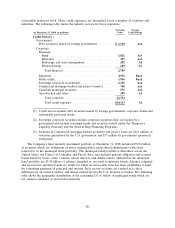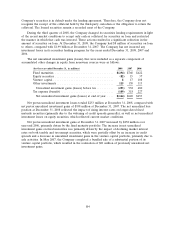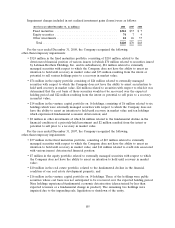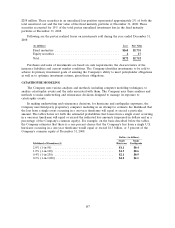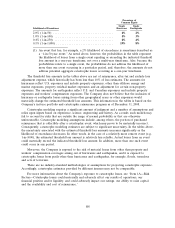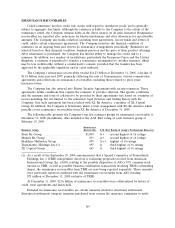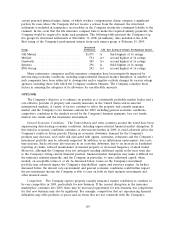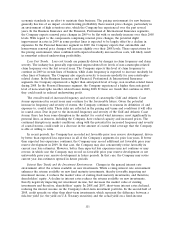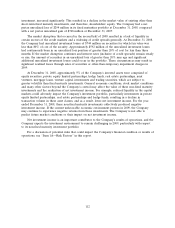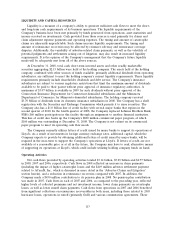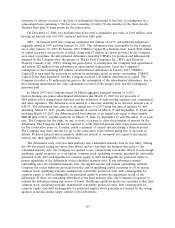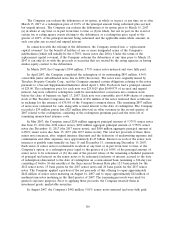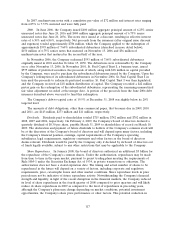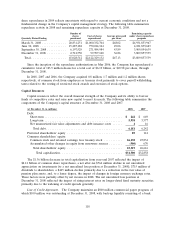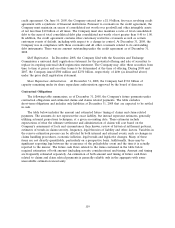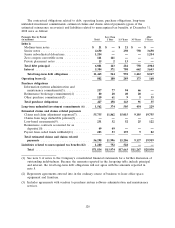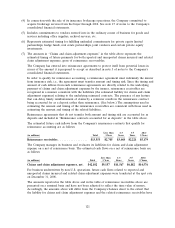Travelers 2008 Annual Report Download - page 123
Download and view the complete annual report
Please find page 123 of the 2008 Travelers annual report below. You can navigate through the pages in the report by either clicking on the pages listed below, or by using the keyword search tool below to find specific information within the annual report.economic standards in an effort to maintain their business. The pricing environment for new business
generally has less of an impact on underwriting profitability than renewal price changes, particularly in
an environment of high retention rates, which the Company has experienced over the past several
years. In the Business Insurance and the Financial, Professional & International Insurance segments,
the Company expects renewal price changes in 2009 to be flat with or modestly increase over their 2008
levels. With regard to the components comprising renewal price changes, the potential slight
improvement in rates in 2009 in some product lines is expected to be largely offset by a decline in
exposures. In the Personal Insurance segment in 2009, the Company expects that automobile and
homeowners renewal price changes will increase slightly over their 2008 levels. These expectations for
the pricing environment, when combined with expected modestly increased loss costs, will likely result
in somewhat reduced underwriting profitability.
Loss Cost Trends. Loss cost trends are primarily driven by changes in claim frequency and claim
severity. The industry has generally experienced unprecedented low levels of non-catastrophe-related
claim frequency over the last several years. The Company expects this level of claim frequency to
continue in 2009 in certain lines of business, while claim frequency is expected to increase modestly for
other lines of business. The Company also expects severity to increase modestly for non-catastrophe-
related claims. In the Business Insurance and Financial, Professional & International Insurance
segments, the Company experienced a higher than anticipated level of large, non weather-related losses
during 2008. In the Personal Insurance segment, the Company experienced a higher than anticipated
level of non-catastrophe weather related losses during 2008. If these are trends that continue in 2009,
they could result in reduced underwriting profit.
The overall trend of increased frequency and severity of catastrophic Gulf and Atlantic Coast
storms experienced in recent years may continue for the foreseeable future. Given the potential
increase in frequency and severity of storms, the Company continues to reassess its definition of, and
exposure to, coastal risks. These risks are reflected in the pricing and terms and conditions it will offer
in coastal areas. Due in part to the increased frequency and severity of the Gulf and Atlantic Coast
storms, there has been some disruption in the market for coastal wind insurance, most significantly in
personal lines, as insurers, including the Company, have reduced capacity and increased prices. The
continued disruption in market conditions, along with the potential for increased frequency and severity
of coastal storms, could result in a decrease in the amount of coastal wind coverage that the Company
is able or willing to write.
In recent periods, the Company has recorded net favorable prior year reserve development, driven
by better than expected loss experience in all of the Company’s segments for prior loss years. If better
than expected loss experience continues, the Company may record additional net favorable prior year
reserve development in 2009. In that case, the Company may also concurrently revise favorably its
current year loss estimates. However, better than expected loss experience may not continue or may
reverse, in which case the Company may record no favorable prior year reserve development or net
unfavorable prior year reserve development in future periods. In that case, the Company may revise
current year loss estimates upward in future periods.
Interest Rate Trends and the Investment Environment. Changes in the general interest rate
environment affect the returns available on new investments. While a rising interest rate environment
enhances the returns available on new fixed maturity investments, thereby favorably impacting net
investment income, it reduces the market value of existing fixed maturity investments, and therefore,
shareholders’ equity. A decline in interest rates reduces the returns available on new investments,
thereby negatively impacting net investment income, but increases the market value of existing
investments and therefore, shareholders’ equity. In 2008 and 2007, short-term interest rates declined,
reducing the interest income on the Company’s short-term investment portfolio. In the second half of
2008, credit spreads on other than short-term investments, which represent the difference between a
risk-free yield (i.e. the yield on U.S. Treasury securities) and the actual yield on a fixed-income
111


